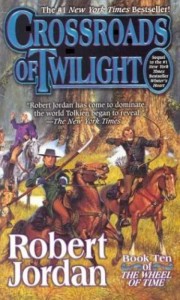If you’re like me, you got sick of playing those old tournament fighter games like Street Fighter and Mortal Kombat whose main difficulty was based around the user memorizing long strings of button combinations to trigger special moves. Like in Mortal Kombat, I still remember that Scorpion’s spear move was Back, Back, B. So anyone who has taken the time memorize dozens of these moves has a major advantage over someone who is a good player but hasn’t memorized.
Enter Super Smash Bros. (SSB), released for the Nintendo 64 by HAL Laboratory in 1999. The most unique feature of the game is immediately obvious: the fighters are all Nintendo-licensed characters from other games. Mario throws punches and fireballs. Samus Aran fires charged-up plasma shots, missiles, and drops bombs from her morph-ball form. And others, including several that characters that you can unlock. If you’re a Nintendo lover like me, it’s a lot of fun sending Donkey Kong in for a wind-up punch against Fox McCloud.
The damage system in SSB is one of a kind. Instead of having a health meter that signals how close to death you are, you have a damage percentage on the bottom of the screen. I’m not really sure why it’s expressed as a percentage, because it doesn’t stop at 100%, it just keeps going. The higher the damage level, the farther you fly when you’re hit, and the longer it takes you to recover. An enemy attack doesn’t kill you directly; to die, you have to leave the edge of the screen on any side. But the higher your damage meter goes, the more likely you will fly off the screen. This means that anybody can still have a chance to win even if their damage percentage is very high. A character with 0% damage can die by slipping off the edge, and a character with 400% damage can keep fighting (though he’ll have to be very careful not to get hit too hard).
Besides the obvious appeal of the Nintendo characters, the big appeal of this game for me is the simple play control. Regular moves, like punches and kicks, all involve the A button and some direction on the direction pad. Down+A might be a sweep kick, for instance, and forward+A might be a punch. Smash attacks are also easy to perform, and are more powerful (though often slower). These are done by “tapping” the direction pad in a direction at the same moment that you press the A button. These really pack a wallop, and are often the best way to send an enemy flying off the screen once you’ve brought up their damage level.
The special moves are no harder to perform than the regular moves, they are just combinations of the direction pad and the B button. so each character has 4 special moves. As an example, Pikachu:
B: Shoots a bolt of static that hops along the ground in front of you. It also climbs walls until it runs out.
Up+B:Â Pikachu jumps super-fast, no damage, but good for recovery
Forward+B:Â Pikachu charges up then fires himself forward like a cannonball
Down+B: Pikachu’s best move, and the easiest move in the game to spam. Calls a powerful lightning bolt down from the sky, striking Pikachu directly. Anyone in the path of the bolt or touching Pikachu himself takes heavy damage and gets thrown a long way.
Each character is lots of fun to play, each with their own special traits. Zelda is one of the most unique because she is two characters in one. Zelda has powerful magic bursts for her regular moves and has some nice long range and short range special attacks, but she’s pretty slow to move around. With her Down+B move, she transforms into Sheik, her ninja-like alter-ego. Sheik’s attack are weak but super-quick. In the hands of the right player, Sheik can run circles around her enemies.
Up to four players fight at a time in arenas themed around Nintendo games, and random items drop down. Food items allow fighters to heal their damage. The home run bat has medium reach and a decent damage when swung, but when swung in a smash attack it has devestating knockback ability. Also, there are pokeballs which summon a random pokemon to damage your enemies.
The original game was followed up by Super Smash Bros. Melee in 2001 for Gamecube and Super Smash Bros. Brawl in 2008 for Wii. Each has some new mini-games and lots of new characters. Most of the appeal is the improved graphics, new characters, more and more each time. In Melee, Bowser and Peach (Princess Toadstool), as well as Ganondorf are major additions. In Brawl, Sonic the Hedgehog, and Solid Snake become some of the first non-Nintendo created characters to be added. Brawl also has the addition of a single-player quest style game, involving all of the characters. It’s a fun diversion in it’s own right. Most of the enemies in that section are unique to that, and the only way you can collect trophies for them is to use the “trophy stand” item against them. The stand appears randomly, and if you throw it and connect with a sufficiently weakened enemy they will turn into a trophy. The stand will appear more frequently the higher the difficulty, but you also have to survive the rest of the level without losing your lives or you will lose your trophy as well.
A lot of fan groups on the internet cry out for Mega Man as an addition in future games. I think he would be a good character. Between all the special moves he’s gained in all of his franchise games, he would have plenty of special ability opportunities. But there’s one character that I’d like to see even more than Mega Man: Earthworm Jim. He could use the worm whip for one special move, his blaster gun for another, maybe Snott for a recovery move. It would be so much fun to pit Earthworm Jim against Asmus Aran! Well, I can always hope, for SSB 4.
Finding a copy of this game shouldn’t be too difficult. A quick eBay search comes up with quite a few hits for around 20 dollars. But, really, you might be better off just getting one of the newer versions. All of the characters in the original game are present in both of the other two games anyway, plus the newer games have better graphics and are playable on the Wii. Check the series out. Enjoy!




 From top to bottom, Batman: Arkham Asylum for the Sony PS3 is a vivid, detailed, and sometimes chilling foray into the gothic world of Batman.
From top to bottom, Batman: Arkham Asylum for the Sony PS3 is a vivid, detailed, and sometimes chilling foray into the gothic world of Batman. Melissa Shaw’s short fiction has appeared in
Melissa Shaw’s short fiction has appeared in  ,Review written by Frank Dutkiewicz,
,Review written by Frank Dutkiewicz,